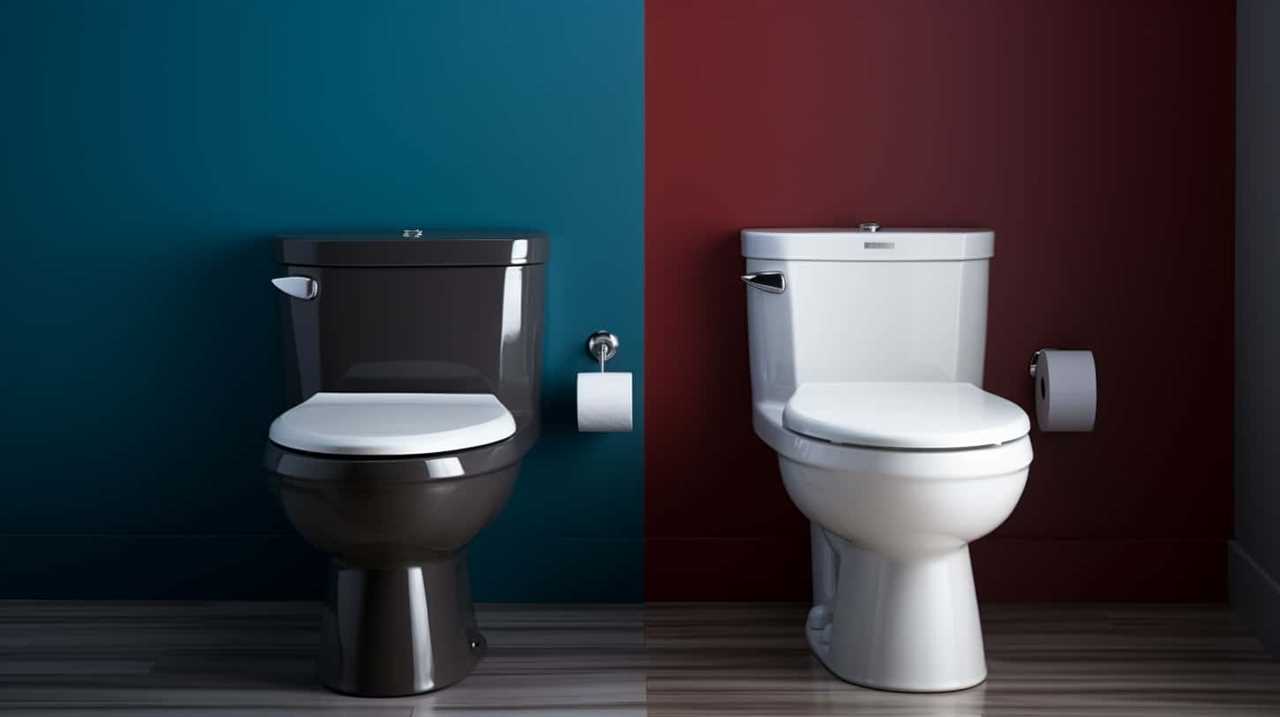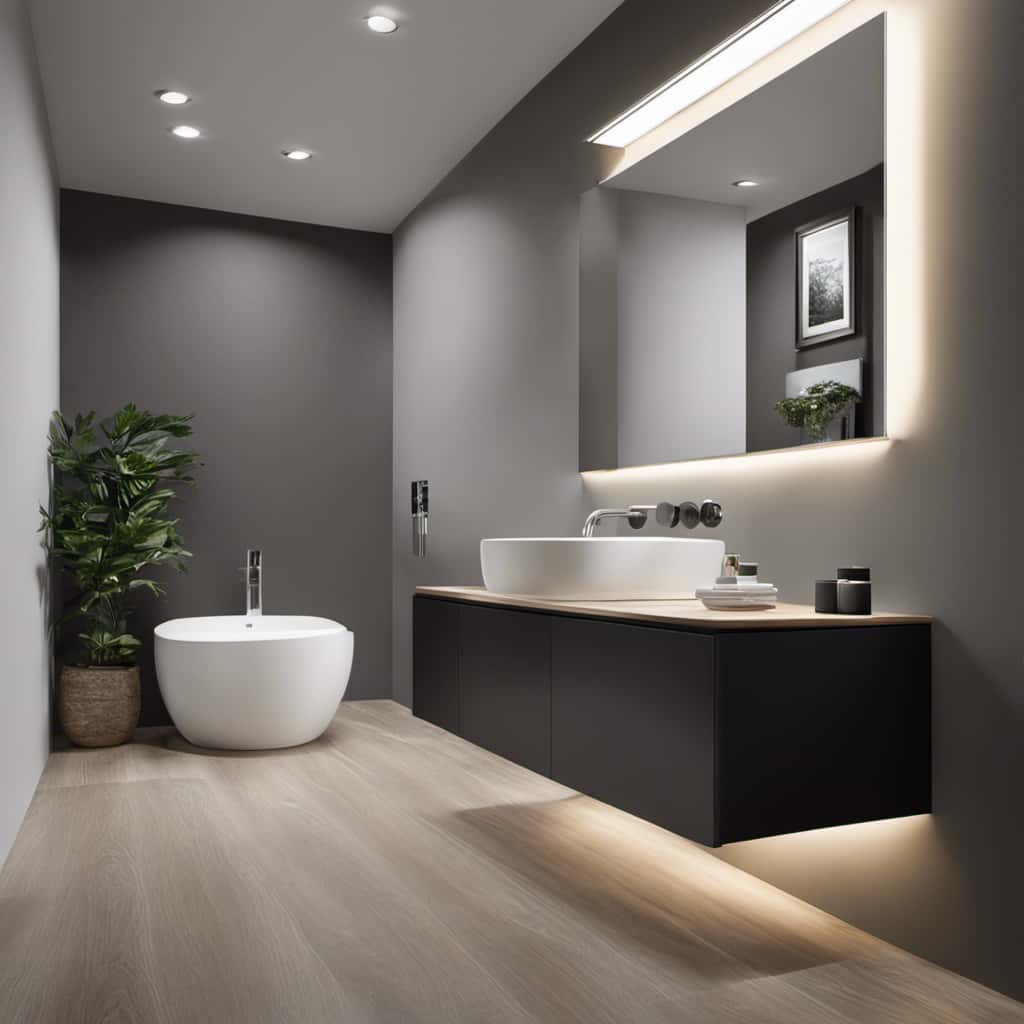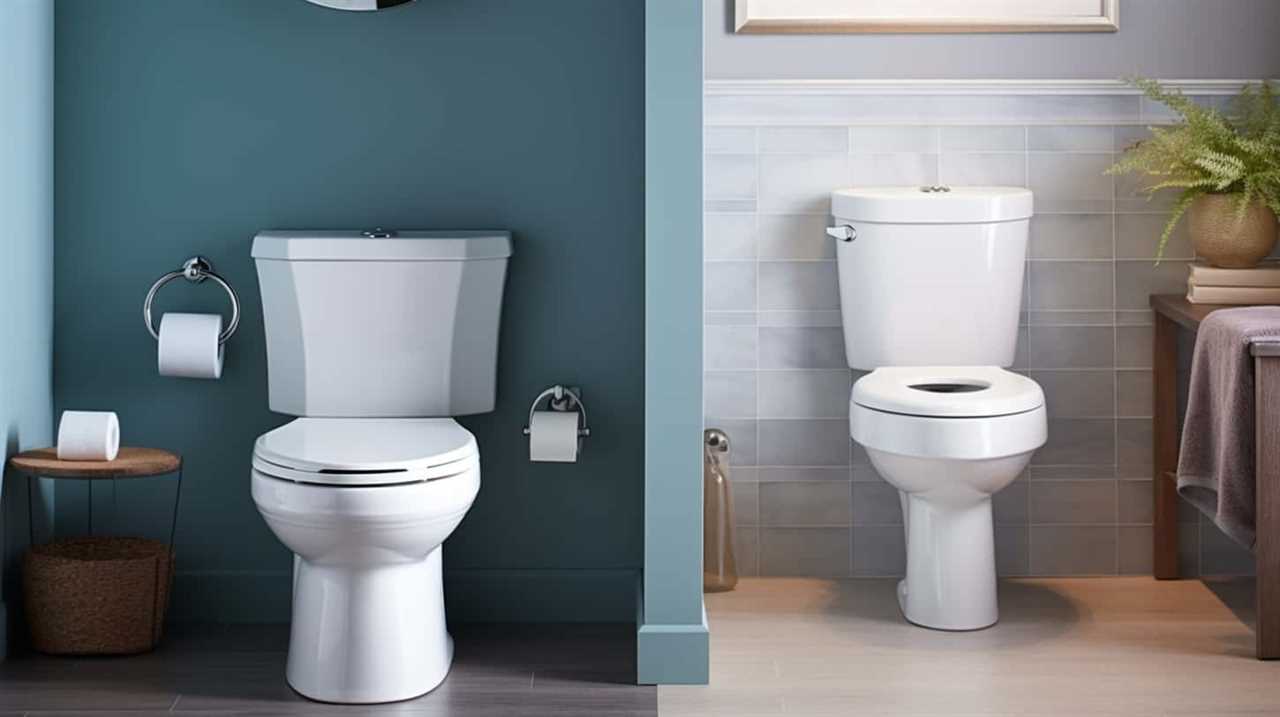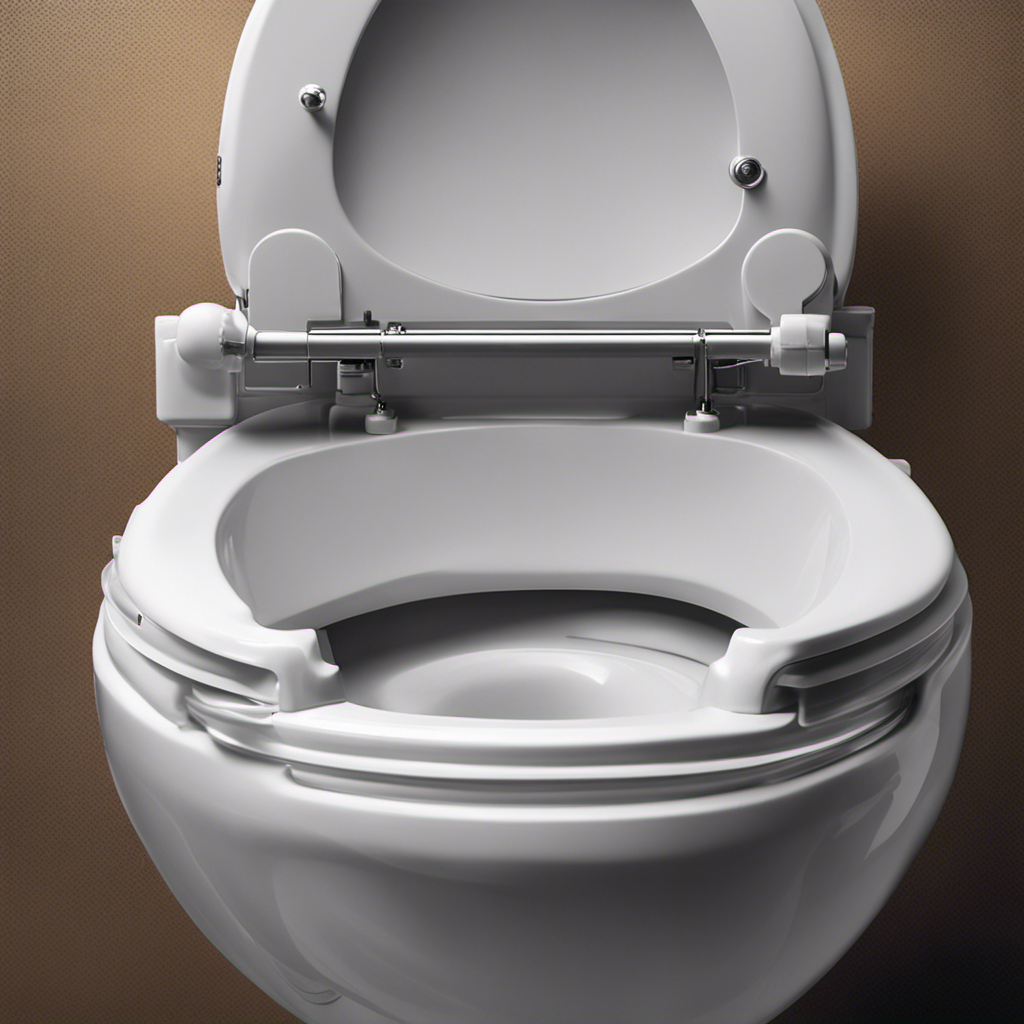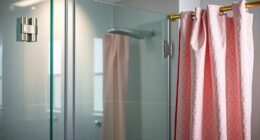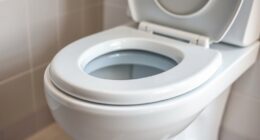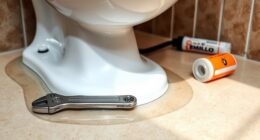Have you ever contemplated the purpose of the two buttons located on the top of the toilet? Allow us to shed some light on the subject! These buttons, commonly referred to as flush buttons, play a crucial role in the functionality of modern toilets.
In this article, we’ll delve into the purpose and functionality of these buttons, helping you understand how to differentiate between them and make the most of their water conservation benefits.
Get ready to become a toilet button master!
Key Takeaways
- Dual flush systems have two buttons on the top of the toilet, with the larger button for solid waste and the smaller button for liquid waste.
- The larger button is associated with a full flush, while the smaller button is for a half flush.
- Using the smaller button conserves water and is ideal for liquid waste, while the larger button uses more water and is meant for solid waste.
- Adjusting the flush power and water usage with the buttons helps optimize water usage, reduce water bills, and contribute to environmental conservation.
Understanding the Flush Buttons
Understanding the flush buttons is essential for efficient and effective use of the toilet. With toilet technology advancements, traditional single-flush systems have been replaced by more efficient dual flush systems. These systems offer two buttons on the top of the toilet, each with a different purpose.
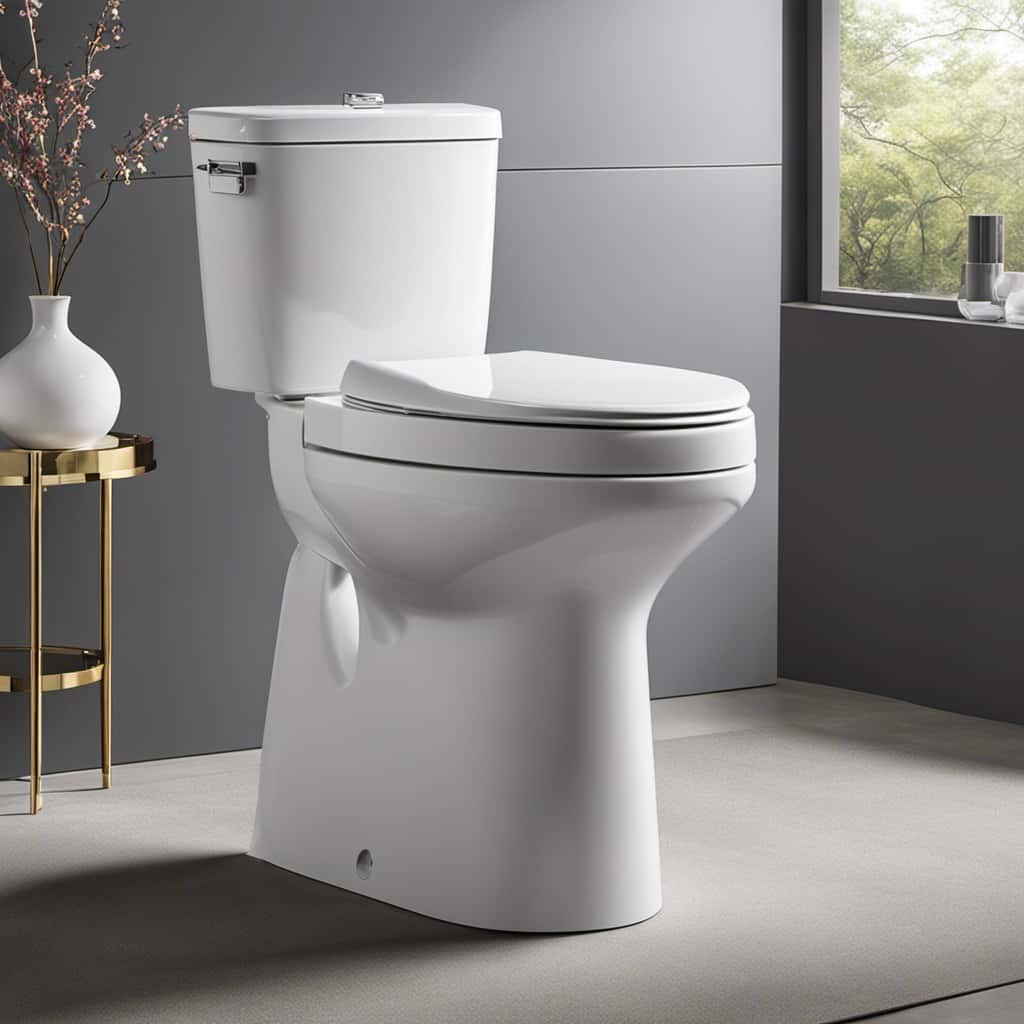
The larger button is designed for solid waste disposal and provides a higher water volume to ensure an effective flush. On the other hand, the smaller button is intended for liquid waste and uses less water.
Differentiating Between the Two Buttons
To differentiate between the two buttons on the top of the toilet, we can use a simple preposition. The flush button mechanism consists of two buttons: a larger one for a full flush and a smaller one for a half flush. Here’s how you can tell them apart:
- Size: The larger button is typically used for a full flush, while the smaller button is for a half flush. The size difference makes it easy to identify which button to press for the desired flush.
- Labels: Some toilets have labels indicating the purpose of each button. Look for words like ‘full’ and ‘half’ or icons representing a full and half-filled toilet bowl.
- Water usage: The larger button is associated with a higher water volume, which is suitable for solid waste. The smaller button uses less water and is ideal for liquid waste.
Understanding the differences between these buttons will help you use the appropriate flush setting and optimize water usage.
Now, let’s explore the water conservation benefits of using these buttons.
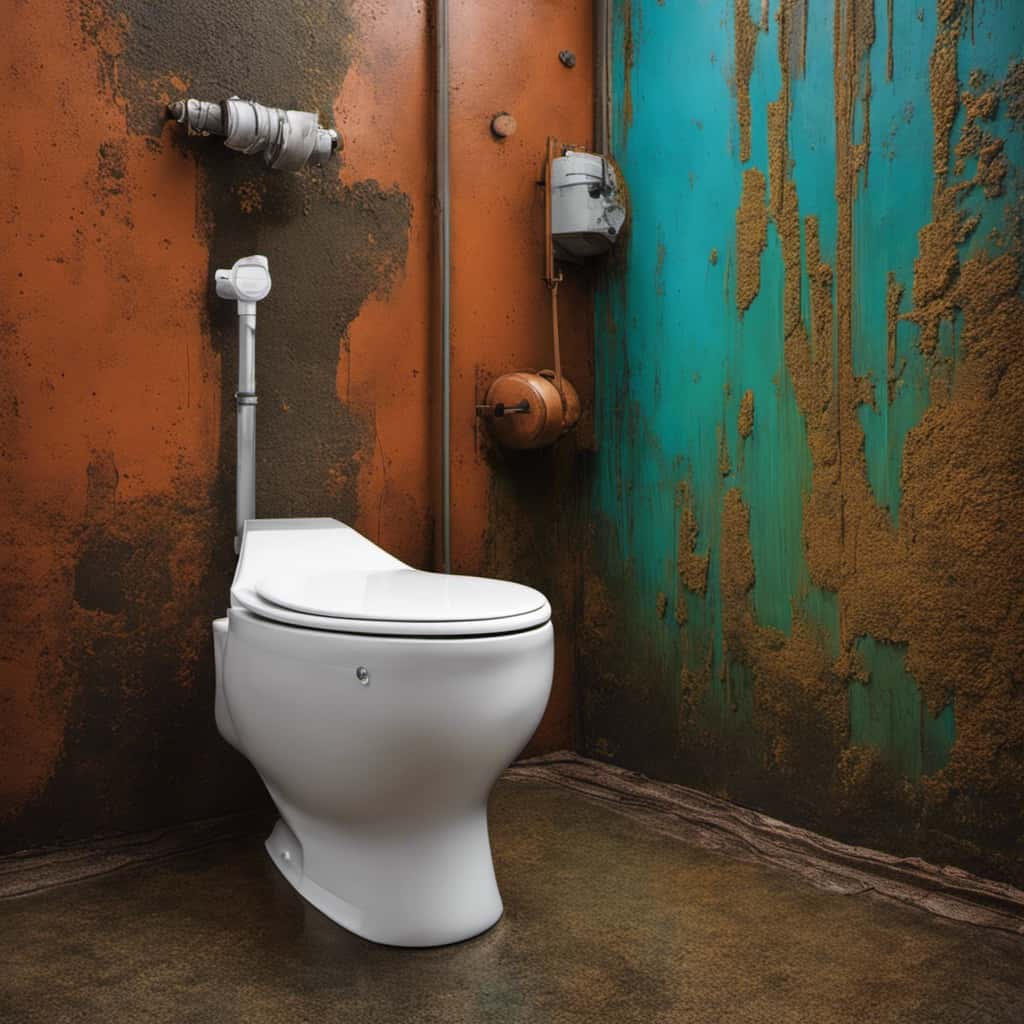
Exploring Water Conservation Benefits
Now let’s delve into the water conservation benefits of using these two buttons on the top of the toilet.
Water conservation is of utmost importance in today’s world, as it helps in preserving this precious resource and reducing the impact of water usage on the environment.
By using the smaller button, also known as the half-flush button, we can conserve a significant amount of water. This button is designed for liquid waste and uses a lesser amount of water compared to the full-flush button.
On the other hand, the full-flush button is meant for solid waste and uses a larger amount of water.
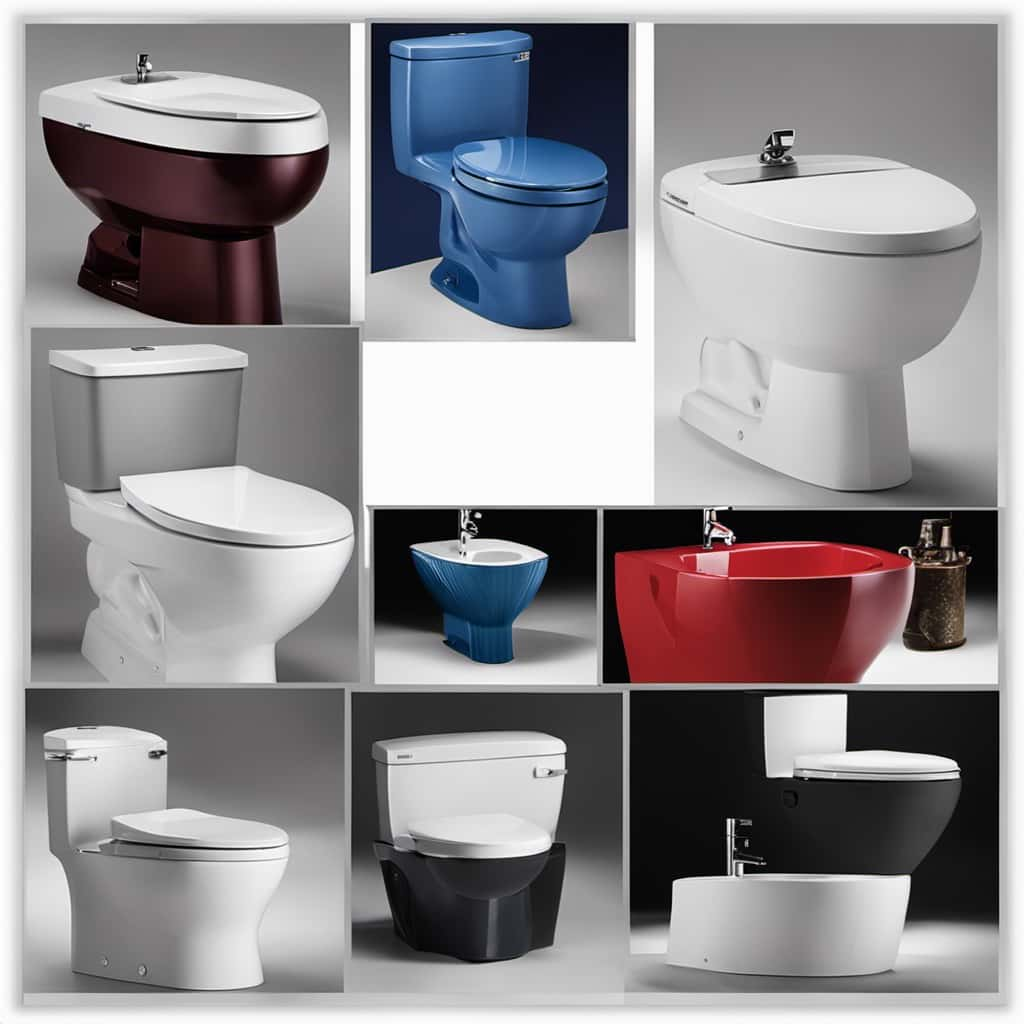
Adjusting Flush Power and Water Usage
Continuing our exploration of water conservation benefits, let’s now delve into adjusting the flush power and water usage in relation to the two buttons on the top of the toilet. These buttons offer a convenient way to control the amount of water used with each flush, helping us reduce our environmental impact.
Here are three key benefits of flush power adjustment and water saving techniques:
- Efficient water usage: By selecting the appropriate button, we can determine the amount of water needed for each flush, allowing us to conserve water without compromising cleanliness.
- Cost savings: With adjustable flush power, we can reduce water consumption, resulting in lower water bills and long-term savings.
- Environmental conservation: By using less water, we contribute to the preservation of this precious resource, ensuring its availability for future generations.
Now that we understand the advantages, let’s move on to exploring some tips for proper button usage.
Tips for Proper Button Usage
After understanding the benefits of adjusting flush power and water usage, we can now explore some tips for effectively using the two buttons on the top of the toilet. The buttons on the top of the toilet are designed to offer different flushing options, allowing you to control the amount of water used for each flush. To ensure proper button usage and avoid common issues, refer to the table below for a detailed explanation of the button mechanism and troubleshooting tips:
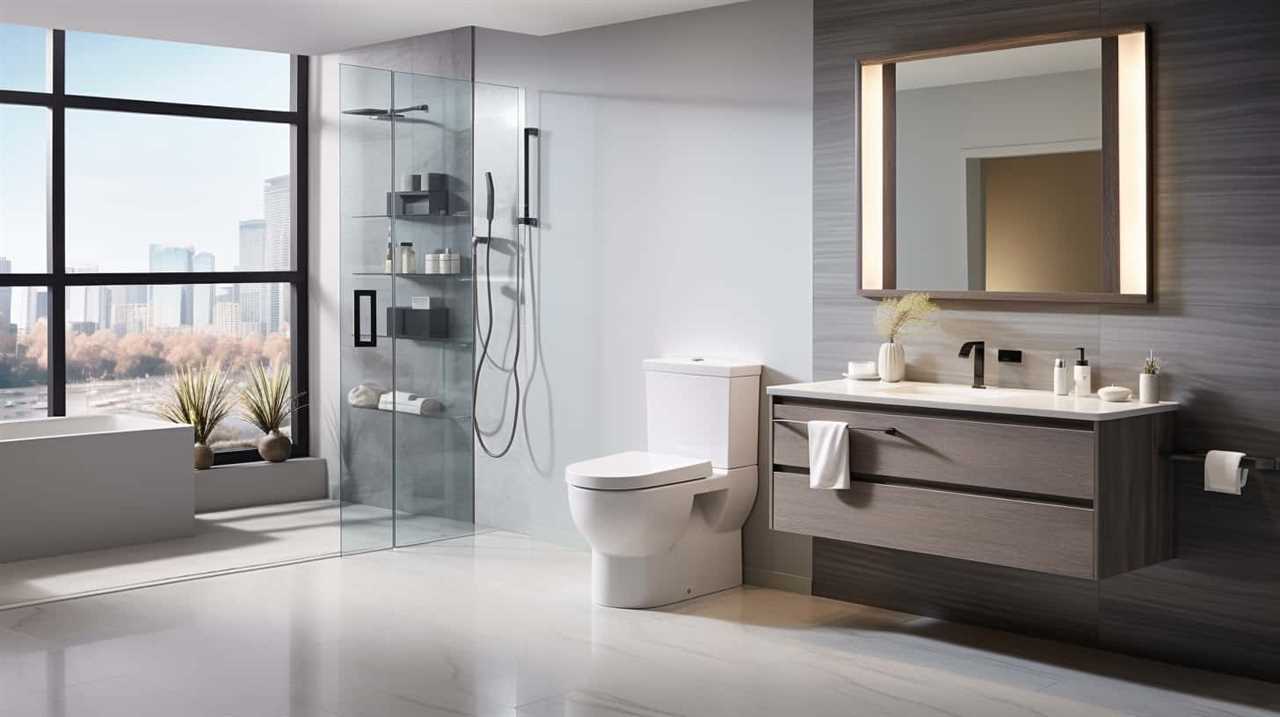
| Button | Flush Power | Water Usage | Common Issues | Troubleshooting |
|---|---|---|---|---|
| Button A | High | Full Flush | Insufficient flush power | Check water supply |
| Button B | Low | Half Flush | Clogging | Clear blockages |
| Both Buttons | Adjustable | Dual Flush | Leaking | Replace faulty parts |
Frequently Asked Questions
How Do the Flush Buttons on a Toilet Work?
To understand the inner workings of flush buttons, we must explore the evolution of toilet flushing technology. The two buttons on the top of the toilet provide different flushing options, allowing for water conservation and efficient waste removal.
Are the Flush Buttons on All Toilets the Same?
Flush button variations exist, with different designs for toilets. It’s essential to understand the purpose of each button. They control the water flow for different flushes, allowing for water conservation and efficient flushing.
Can Using the Smaller Flush Button Save Water?
Using dual flush toilets can save a significant amount of water. The smaller flush button is highly effective in conserving water, allowing us to save even more. It’s a smart and efficient choice.
What Should I Do if the Flush Power Is Too Weak?
To troubleshoot a weak flush, we can try increasing the flush power. Check the water level, adjust the fill valve, clear any clogs, and ensure the flapper is working properly.
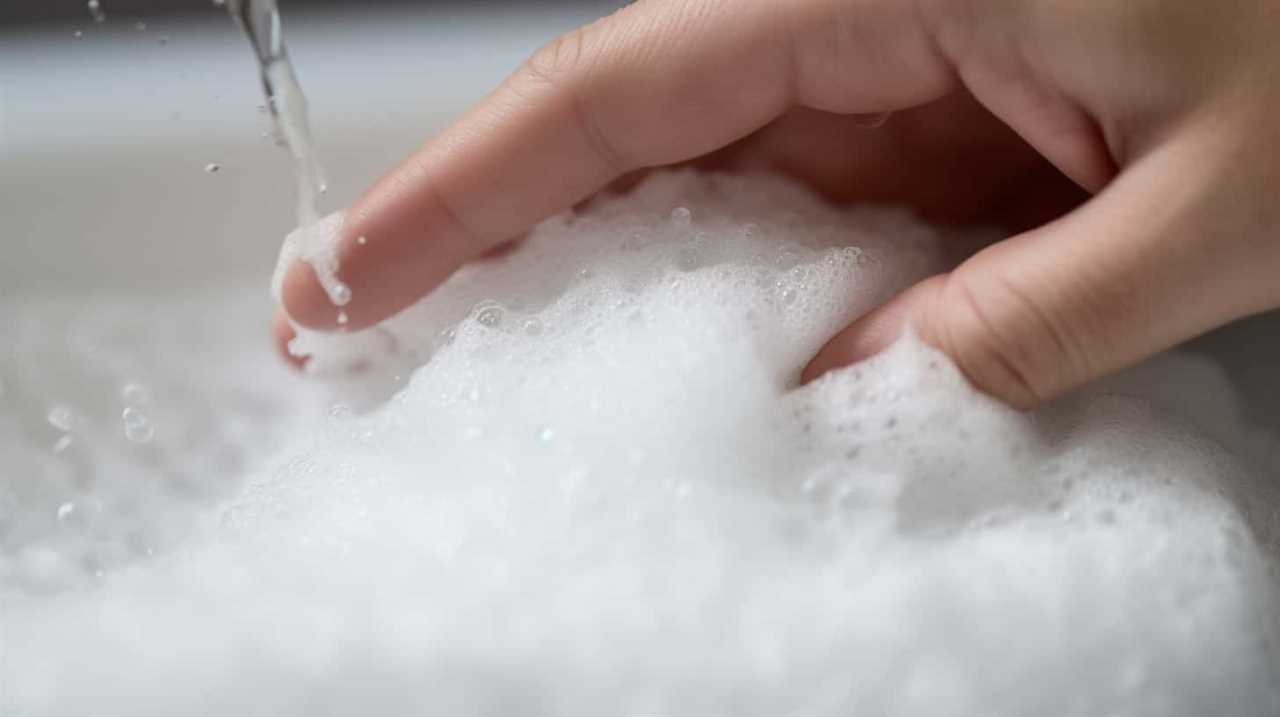
Are There Any Specific Tips for Using the Flush Buttons Properly?
To properly use the flush buttons on the top of the toilet, we recommend understanding toilet flush maintenance and troubleshooting weak flush. It’s essential to familiarize yourself with the buttons’ functions and adjust accordingly for optimal flushing power.
Conclusion
In conclusion, the two buttons on the top of the toilet serve different purposes.
One button is for a full flush, which uses more water and is suitable for solid waste.
The other button is for a half flush, which uses less water and is suitable for liquid waste.

By understanding and properly utilizing these buttons, we can conserve water and contribute to a more sustainable future.
So, next time you use the toilet, remember to press the right button and be a part of the water conservation effort.

